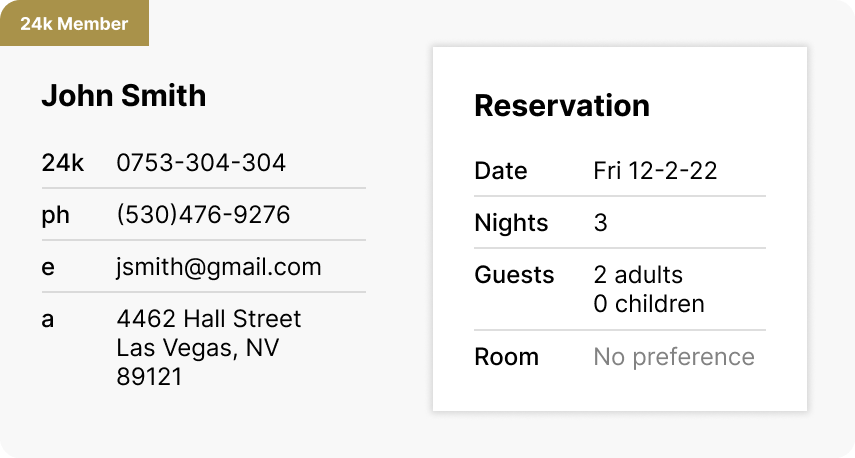Table of Contents
Voice assistants occasionally need to hand calls over to an agent during a conversation. Sometimes, this is pre-planned, like when a voice assistant records a caller’s details before passing them over to an agent to complete a transaction. But sometimes, this handoff is unexpected, resulting from a technical issue or a caller requesting to speak to someone.
In these situations, customers are already starting to get frustrated, and poor execution during these moments can only make things worse. This makes it essential to prioritize the user experience at every stage of the handoff.
Although voice assistants powered by conversational AI can contain calls, people’s negative perceptions of automated systems can override their trust. Read on as we show you how to create the best handoff experience from AI to a human.
What is agent handover?
Agent handover is the process of transferring a customer from an automated system like a voice assistant or chatbot to a human agent. This can be a pre-determined workflow or when a request is highly complex and cannot be completed by the automated system.
The goal of agent handover is to create a smooth transition so the customer doesn’t have to repeat the information they’ve already given and can quickly get the help they need.
Why is timely human handoff important?
Your customers are used to the instant convenience of digital experiences and buying products or services with just a few clicks. When they call for help, they often encounter long waits and automated messaging. Not only is this frustrating for customers, but it also increases your key efficiency metrics like average handle time and abandonment rate. Timely handoff to an agent not only improves the customer experience but also helps you hit your efficiency KPIs by sending notifications that prepare agents for every interaction.
When should an AI call assistant handoff to an agent?
The most appropriate time for an AI call assistant to hand off to an agent is unique to your business case. All customer queries are important, but they will require an order of priority, which the call type can determine.
Revenue generating calls
Agents are more equipped to handle high-urgency, high-priority calls that can negatively impact business revenue and the customer’s experience if they are not resolved quickly.
When a customer wants to cancel their account, they require immediate attention. An agent can negotiate and incentivize them to stay. Therefore, handing over to an agent earlier in the conversation will have a greater impact and create better outcomes for the end-user. However, customers with routine queries such as resetting their password are more willing to wait for a response from an AI call assistant who can guide them through the process.
Managing sensitive calls
Changing an AI call assistant’s tone of voice to sound empathetic is an effective way of creating the best experience for the customer. For use cases of a sensitive nature, such as reporting the death of a family member, it’s crucial to give customers the choice to skip the voice assistant and speak directly to an agent who can provide the support they need.
Complex or ambiguous queries
When a call involves complex or unclear questions, handing off to an agent can be the best outcome. Effective AI voice assistants can understand complex user queries regardless of the way a customer chooses to explain the issue, but sometimes, a human agent is better suited to handle situations that require a nuanced understanding or detailed problem-solving where multiple teams are required to resolve the issue. Transferring to an agent early in these calls can prevent frustration and lead to a faster, more accurate resolution.
How to reduce call abandonment in your contact center with voice AI
Get your copyWhat typically triggers agent handover?
You can design your voice assistant to hand off calls or escalate calls based on whatever triggers you see fit. Some common triggers include the following:
The caller asks to speak to an agent
In some cases, callers explicitly request to speak with an agent if they feel the functionality of the AI assistant may not meet their needs. We’ve all had bad experiences with voice technologies at some point, so it’s no surprise that some callers will shout AGENT as soon as they realize they’re talking to a voice assistant.
Even those less skeptical customers may doubt the voice assistant’s capabilities, asking to speak to an agent because they believe their query to be too complex for the system.
The caller doesn’t say anything
Silence can stem from confusion, not knowing what to say, or anticipating a different outcome (such as speaking to a robot rather than a person). Recognizing and addressing silence as a trigger is essential to ensure the caller receives the assistance they need.
There is a misunderstanding
There are instances when the voice assistant may misunderstand or misinterpret the customer’s request. Ambiguous queries, accents, background noise, and poor phone signal can all contribute to misinterpretation. Rather than asking the caller to repeat themselves over and over, it can make more sense to hand the call over to an agent.
Empowering agents and enhancing efficiency: PolyAI's voice assistant reshapes customer care for Atos
Read the case study5 tips to hand off to an agent effectively
Handoffs happen for a number of reasons, so how do you create the best handoff experience for your customers and contact center agents?
1. Know the right moment to hand off
It’s not uncommon for callers to ask to speak to an agent immediately, especially if they have been stung by poor experiences with automated systems in the past.
During these interactions, the voice assistant can encourage the conversation by telling the caller about wait times and asking if they’d like to try the voice assistant first. Another option is having the voice assistant ask for more information about the issue to ensure the call gets routed to the right person.
In the first instance, the caller often gives the voice assistant a chance, learning in the process that it is capable of supporting them. In the second instance, the information provided by the caller can be passed to the agent, who can pick up where the voice assistant left off and handle the caller faster than they could have otherwise.
2. Handle silence thoughtfully
Because silence can carry various meanings, designing responses to all situations is key to the voice assistant’s success and whether the handoff is effective.
If a caller seems unsure or distracted and hasn’t responded, the agent can say, “Hey, are you there?” in an uncertain, apologetic tone. This lets the caller know the voice assistant is aware of the silence and encourages a response in a natural way.
Callers that remain silent can be automatically transferred to an agent. However, further conversation can be encouraged by adapting the voice assistant’s response and tone to different scenarios.
3. Clarify to prevent misunderstandings
There are often calls with ambiguity or confusion about what the customer is asking. For example, they might mention ‘direct debit’ without specifying what they want to do.
To handle these situations, the voice assistant can clarify by asking, “I understand you’re calling about direct debit. What would you like to do exactly?” This approach helps to understand the caller’s needs more clearly in a way that moves the conversation forward naturally.
The decision as to whether you hand off or encourage further conversation with the voice assistant is under your control and set by your business rules. For example, vulnerable customers or sensitive calls might require immediate handoff compared to routine FAQs.
By asking clarifying questions and gathering additional information during these scenarios, the voice assistant reduces the need for the customer to repeat themselves when handed over to an agent and decreases the time to resolution.
4. Use partial automation to streamline handoffs
This approach saves the agent and customer time by partially automating the call before handing it off to a live agent to complete the transaction. For example, a voice assistant initiates the reservation process by collecting essential details like the arrival date and number of guests before handing them off to an agent to complete the booking.
To ensure a seamless customer experience, when a call must be routed to an agent, an AI call assistant can populate data from the call into a screen pop in an easy-to-read template on your agent’s desktop. This best practice can use real-time data and generative AI to summarize the interaction, reducing the need for the customer to repeat their query and making the process significantly more efficient.
This handoff strategy is an effective first step for organizations that don’t yet have the infrastructure to automate all customer transactions end-to-end.
5. Gather context with clarifying questions
Customers ask unexpected questions, and sometimes, the intent can be ambiguous. An AI call assistant might understand the customer is calling about a fault with their car but can’t pick up on the nuances of what the caller is saying.
In these instances, the AI call assistant can encourage further conversation by saying, “Can you tell me a bit more about the issue?”.
By asking clarifying questions and gathering additional information, the voice assistant reduces the need for the customer to repeat themselves when handed over to an agent and decreases the time to resolution.
You can use this open-ended feedback integrated naturally into the conversation to generate new customer insights and improve operational efficiency as your business needs change.
Implementing effective handoff: Technical considerations and integrations
Carrying out an effective handoff from a technical perspective will depend on your specific tech stack and contact center infrastructure.
Voice assistants integrate seamlessly with CCaaS and telephony solutions via Public Switched Telephone Network (PSTN) or Session Initiated Protocol (SIP).
API and SIP integrations enable the voice assistant to populate data from the call into a screen pop on your agent’s desktop, such as reservation details, in the case of a hotel booking.

PolyAI knows when you need to step in
Poor agent handover is usually the result of miscommunication. Legacy voice automation systems like IVRs have restricted how customers can explain their issues to one-word answers like “Billing” or “Accounts,” when really what they need the freedom to say is, “I paid my bill last week, but my account is still saying it’s unpaid, and I’m being charged interest. Can you tell me why?”
Industry-leading speech recognition
Our industry-leading voice assistants are engineered specifically for spoken conversations over the phone. So our voice assistants understand what callers say, however they speak, guide callers through business logic to complete transactions, and respond appropriately in an engaging tone.
A combination of automatic speech recognition (ASR) models supercharged with spoken language understanding (SLU) features delivers human-level understanding, enabling callers to speak naturally. Dialogue management frameworks ensure LLMs stay focused on the task while allowing free-flowing conversation in a custom-branded voice tailored to your business.
Avoid miscommunication in agent handoffs
With PolyAI, you can find out why customers are calling and route them to the right place with a voice assistant that feels, sounds, and speaks like your dream customer service agent.
Discover how PolyAI can help you drive efficiencies in your contact center and deliver effortless CX at scale.
Agent handover FAQs
The agent handover process is when an AI assistant transfers a customer call to a human agent. This can be a planned transfer or a quick response to customer needs, ensuring a smooth transition that lets the agent pick up right where the AI left off. This way, customers don’t have to repeat themselves, and the process remains efficient and seamless.
Human handoff is essential when the call involves complex issues, sensitive situations, or high-priority needs like account cancellations. It’s also important when a caller requests an agent or when the AI assistant is unable to interpret or resolve the issue. In these cases, a human can offer the personalized support required to meet customer expectations effectively.
The purpose of agent handover is to give customers the best support by transitioning them to an agent when their needs exceed the capabilities of the AI assistant. Effective handovers help avoid misunderstandings, reduce wait times, and keep customers from needing to repeat information, all of which enhance customer satisfaction and operational efficiency.




